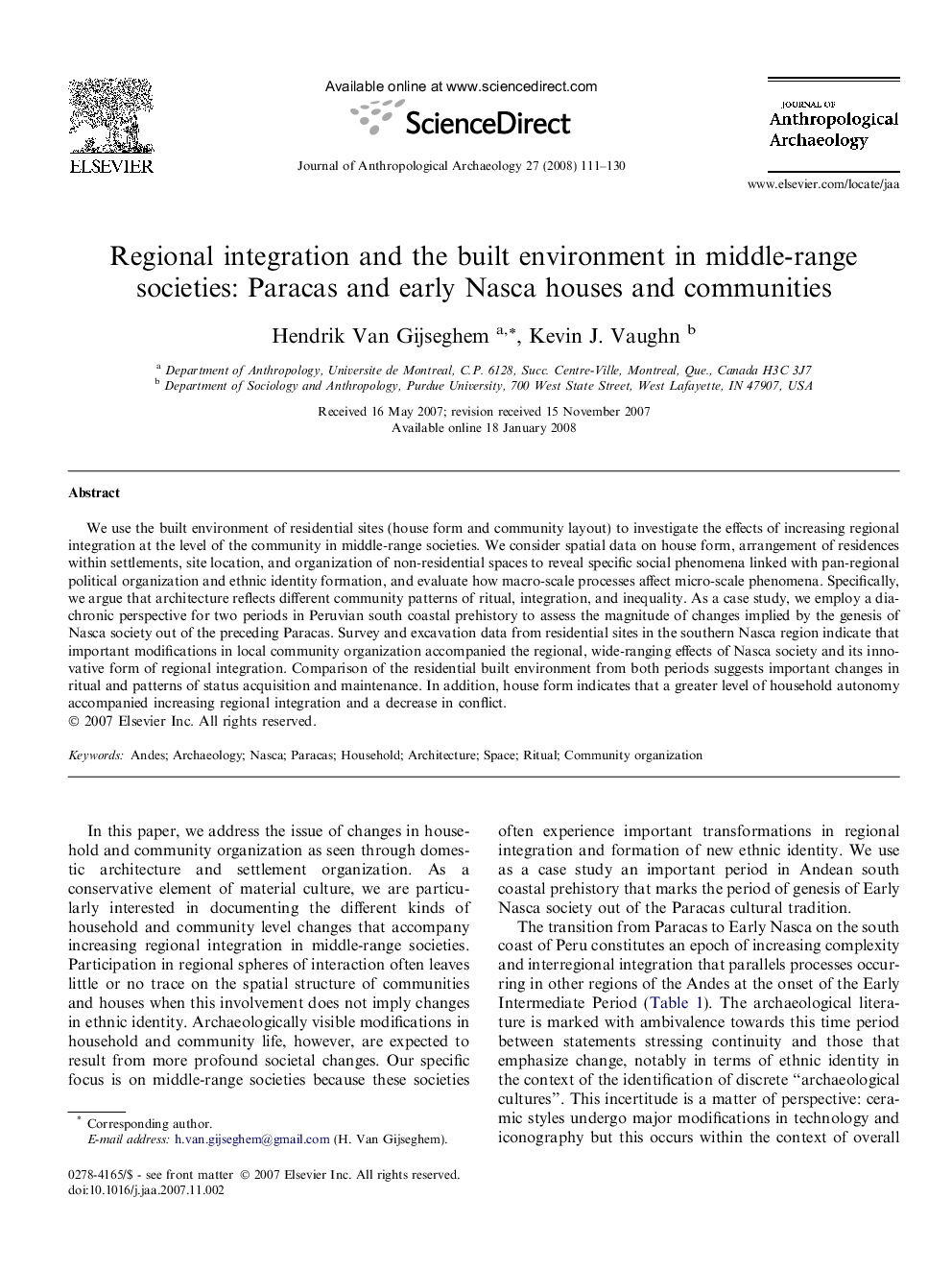| Article ID | Journal | Published Year | Pages | File Type |
|---|---|---|---|---|
| 1035217 | Journal of Anthropological Archaeology | 2008 | 20 Pages |
We use the built environment of residential sites (house form and community layout) to investigate the effects of increasing regional integration at the level of the community in middle-range societies. We consider spatial data on house form, arrangement of residences within settlements, site location, and organization of non-residential spaces to reveal specific social phenomena linked with pan-regional political organization and ethnic identity formation, and evaluate how macro-scale processes affect micro-scale phenomena. Specifically, we argue that architecture reflects different community patterns of ritual, integration, and inequality. As a case study, we employ a diachronic perspective for two periods in Peruvian south coastal prehistory to assess the magnitude of changes implied by the genesis of Nasca society out of the preceding Paracas. Survey and excavation data from residential sites in the southern Nasca region indicate that important modifications in local community organization accompanied the regional, wide-ranging effects of Nasca society and its innovative form of regional integration. Comparison of the residential built environment from both periods suggests important changes in ritual and patterns of status acquisition and maintenance. In addition, house form indicates that a greater level of household autonomy accompanied increasing regional integration and a decrease in conflict.
